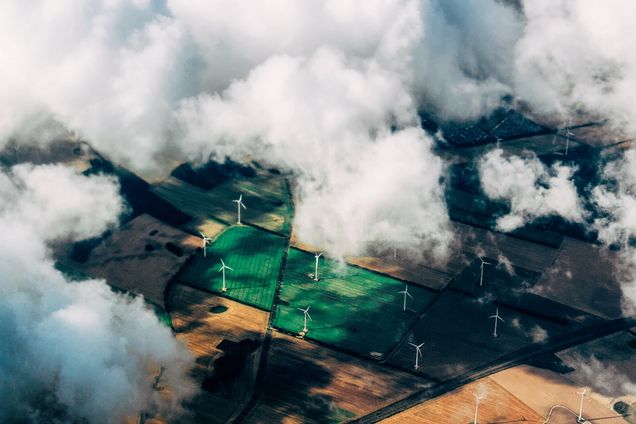Lights On: The State of International Development Finance, Coal and Green Energy

On October 31, 2021, the Group of 20 (G20) made a historic announcement by committing to end finance for coal-fired power plants overseas.
The G20 pledge caps a year of major sustainable finance pledges from national governments and their development finance institutions (DFIs) since the inaugural 2020 Finance in Common Summit, where DFIs pledged to align their financing with the goals of the Paris Agreement. In that time, the landscape of development finance has shifted dramatically in favor of developing countries with green energy transition goals.
As a result, a new policy brief by the Boston University Global Development Policy Center finds that as of November 1 2021, every major DFI that lends internationally has committed to ramping up support for green energy, with 99 percent of internationally available development finance committed to reducing or ending coal finance support and increasing support for renewable energy.
The policy brief charts the commitments made across DFIs up to November 1, 2021, analyzing how they affect the scope of available development finance and outlining policy recommendations for borrowers and lenders alike.
Main findings:
- As of November 1, 2021, every major DFI that lends internationally has committed to ramping up support for green energy.
- Of internationally available development finance, 99 percent is now committed to reducing or ending coal finance support and increasing support for renewable energy.
- The momentum in green energy transitions has shifted to DFIs based in middle-income countries, as the Brazilian Development Bank, African and Asian Development Banks, and China and South Africa have made or participated in major recent announcements.
- As the China Development Bank and the Export-Import Bank of China combined are the largest international public financier of coal power generation, China’s announcement that it would no longer build coal power abroad has dramatically reduced the available international development finance for coal power.
- About one-fifth of available development finance is associated with DFIs that have active programs for assisting countries in reducing their reliance on coal power, including technical and financial assistance.
- About one-third of available development finance is associated with DFIs that have active programs to provide concessional financial or technical assistance for renewable and low-carbon energy development.
- The remaining DFIs without commitments to end coal finance include the Development Bank of Latin America (CAF), the Islamic Development Bank (IsDB) and the New Development Bank (NDB). However, major shareholders of these banks, including Brazil, China, India, Russia, Saudi Arabia and South Africa, joined the October 2021 G20 commitment, which may signal future reforms at these DFIs.
Figure 1: Timeline of Selected MDBs’ and NDBs’ Statements and Policies on Ending Support for Coal Power

It should be noted that the existence of a commitment, policy or assistance to phase out, exclude or retire coal-fired power does not necessarily mean that a given DFI has no remaining coal commitments. Nonetheless, these policies and programs indicate growing attention toward low-carbon transitions and expanding access to clean energy around the world. Just as importantly, they may be useful tools for borrowers with specific energy transition goals, such as renewable energy capacity expansion targets.
In addition, more can and needs to be done to encourage DFIs to adopt and meet clean energy targets and there is ample space for DFIs to strengthen their commitments and expand investments into renewable energy.
Policy recommendations:
- DFIs that have not yet done so should follow suit and align their practices with the Paris Agreement and adopt concrete commitments, with associated policies, programs and assistance for implementation.
- National governments that have committed to ending finance for coal and increasing support for renewable energy should use their votes at multilateral development banks (MDBs) to reflect these pledges.
- More collaboration is needed between DFIs from the Global North and Global South to bring together know-how, financial resources and experience with rapid deployment.
- Clean energy assistance from the DFIs profiled will benefit from further development and regulation of financial markets, including for green bonds. Consistent green bond taxonomies would help to ensure comparability and transparency in how green bonds are actually being used.
- For the sake of the global climate, as well as developing countries and investors, it is crucial that private and commercial lenders follow the example of DFIs and move toward renewable and low-carbon energy.
- Policy frameworks need to be put in place to ensure no worker, power sector entrepreneur or community is left behind by coordinated financing phase outs of coal and subsequent fossil fuels.
The reforms highlighted in this policy brief show a qualitative shift in the availability of development finance for energy generation in developing countries. Countries with plans for continued development of coal-fired power plants will find that only a very small fraction of DFIs continue to offer this support.
Read the Policy Brief